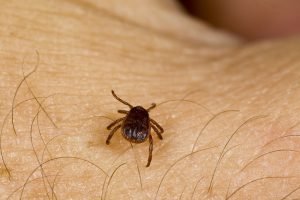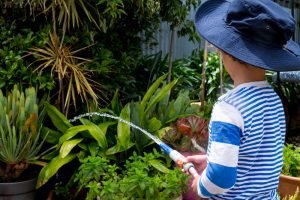
Flys on head
Now that warmer weather has finally returned, everyone is anxious to get outside and do some yardwork and gardening. What’s the quickest way to thwart the excitement of being outdoors after a nearly six-month hiatus? Pests inhabiting your yard.
Mosquitos and ticks have annoying bites and can spread disease, while wasps and bees sting and can cause dangerous allergic reactions.
Insects are a nuisance to yardwork and gardening, but they also can be a danger to you and your family. The best way to enjoy your outdoor space and the warm weather this season is to take precautions and be prepared.
What to watch for
1. Mosquitos: An increase in mosquito activity is typically seen when temperatures rise above 50 degrees, and it doesn’t take long for mosquito populations to grow. Eggs that were laid by mosquitos in the fall can survive the winter in diapause. Once spring arrives, these eggs hatch into mosquito larvae. As temperatures continue to climb, mosquito reproduction picks up, and the population grows. The Ohio Department of Health warns that mosquitos in Ohio can transmit serious diseases such as encephalitis and malaria in humans and heartworm in dogs.
 2. Ticks: Roughly one dozen species of ticks have been identified in Ohio, but three kinds pose the greatest risks to humans and pets: blacklegged tick, American dog tick, and lone star tick. They can transmit Lyme disease, Rocky Mountain spotted fever, and anaplasmosis, among other serious diseases. Ticks become active even earlier than mosquitos. When temperatures crest above 35 degrees, ticks that have weathered winter in vegetation or attached to hosts reemerge and seek new hosts.
2. Ticks: Roughly one dozen species of ticks have been identified in Ohio, but three kinds pose the greatest risks to humans and pets: blacklegged tick, American dog tick, and lone star tick. They can transmit Lyme disease, Rocky Mountain spotted fever, and anaplasmosis, among other serious diseases. Ticks become active even earlier than mosquitos. When temperatures crest above 35 degrees, ticks that have weathered winter in vegetation or attached to hosts reemerge and seek new hosts.
3. Wasps and bees: There are thousands of species of bees and wasps in Ohio. Wasps typically start building nests in late April or early May, and nest populations can reach several hundred by late summer. Bees generally become active once temperatures rise over 50 degrees.
Most types of bees only sting once, while certain kinds of wasps, like the paper wasp, can sting multiple times. Wasps and bees are not aggressive by nature, but when they feel threated or aggravated, they will attack. Stings usually occur when people unknowingly disturb a nest hidden within bushes or trees. Stings can result in reactions as minor as a slight burning sensation and swelling at the site of the sting, to anaphylaxis and even death in those who are allergic.

Young boy watering garden in the backyard.
Pest precautions
1. Wear protective clothing: Insects have a significantly lower chance of stinging or biting if they are unable to come in direct contact with skin. When working in the yard or garden, wear lightweight, long-sleeve shirts, long pants, shoes and socks, as well as a hat, to lower your chances of a bite or sting. This protection will also lower your chances of sunburn and contracting other nuisances like poison ivy, oak, and sumac.
2. Use insect repellent: The Ohio Department of Health recommends wearing repellent with at least 30 percent DEET to deter ticks and using EPA-registered insect repellents to prevent mosquito bites.
3. Leverage landscaping: Incorporating certain plants into your garden or patio planters can help keep mosquitos at bay. Oils in citronella grass, lemon grass, and lemon eucalyptus have been shown to deter mosquitos.
4. Remove standing water: Stagnant water attracts insects, pests, and even rodents. Make sure your garden and yard have proper drainage slopes. Change bird bath water weekly and empty any containers that may collect water regularly.
Pest-proof your property
While it is important to take preventative measures against pests, if you have an infestation, are threatened by the proximity of a stinging insect nest or wish to ensure the highest level of safety in your yard and garden during the warmer seasons, a pest specialist can inspect and treat your property. Call A-1 Able Pest Doc at 1-800-737-8189 to schedule your free inspection.

Recent Comments